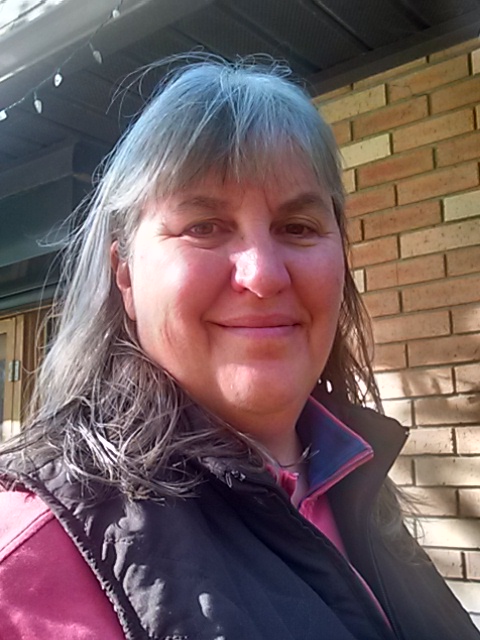Some people may have caught a recent news story about animal abuse at Fair Oaks dairy farms in Indiana. The video was part of an undercover operation to show how animals are really treated at Fair Oaks Farms. “Fairlife was launched in 2012 as a partnership between Coca-Cola, which distributes its products, and the McCloskeys’ Select Milk Producers, a co-op of dairy farms that includes Fair Oaks. The product is a form of “ultrafiltered” milk that is lactose-free and has more protein and calcium and less sugar than traditional milk.” Fairlife and owners of Fair Oaks dairy are being sued by a consumer of Fair life dairy products who says he was deceived by claims it provided a high caliber of care for its animals.
Seeing the abuse didn’t surprise me, but it was still shocking to watch none-the-less. After graduate school I took a teaching position in Purdue’s Agriculture and Biological Engineering Department where I taught composting. I was asked to consult on several projects where owners were considering composting manure from Confined Animal Feeding Operations (CAFO’s). One of these consulting jobs took me to southern California where I toured large mega dairy farms. I will never forget what I saw during that tour and I have never felt the same about industrial milk production.
The problem is the amount of manure that is produced on farms with thousands of cows confined in barns. We stopped a few miles away from the dairy farm and the odor of ammonia was oppressive. The other thing I noticed was the flies. Even from the gates (which are miles away from the barns to prevent unwanted visitors) the flies swarm you. It was the manure piles stored near the barns that attracted flies and gave off ammonia. I couldn’t imagine anyone living near these farms. Many of the farmers in California were selling and moving out. I was told that southern California was no longer profitable for operating large dairies. The reason was largely ground water pollution. The land was saturated with slurried manure sprayed on fields year round. Owners had been paying thousands of dollars in fines every year for contaminating the groundwater, but it wasn’t until the nitrate pollution started killing cows and causing miscarriages that the cost of doing business was too high.
“Domestic cows can live to 20 years; however, those raised for dairy rarely live that long, as the average cow is removed from the dairy herd around age six and marketed for beef.” On farms where the water is heavily polluted with nitrates the pregnant cows (and humans) often miscarry and babies can suffer from blue baby syndrome. The cows at these mega farms were not producing as much milk and being culled after as little as 3 years. When the farm started losing money the owners decided it was time to sell and move. Many dairies relocated to the Midwest were they are once again polluting the ground water. Many large dairies are owned by Dutch farmers who moved to the US more than 20 years ago and continue to invest millions of dollars in starting up more and more mega dairy farms.
Fair Oaks Farms is located about 75 miles north of where I live. I often pass by the corridor along Interstate 65 where these and several other mega dairy farms are located. The smell of ammonia has now become noticeable even from the freeway located many miles from the farms. Fair Oaks started a theme park attracting hundreds of tour groups. What they show visitors is a fairy tale to convince tens of thousands of children and parents that mega dairy farms and CAFO pork production are lovey, peaceful places for animals to live. The video makes it clear that behind the facade mega-dairy farming is not a place where animals are treated well.
The reason that mega dairies have replaced small dairy farms is largely because over-production and government price supports have driven prices too low for small farmers to compete. And there are few farmers left who still want to operate small dairy farms. It takes a tremendous amount of work and dedication. A dairy farmer must milk the herd twice a day seven days a week. It is one of the most labor intensive forms of farming. There is no time off for vacation unless you can find someone who will do the milking. There is no time off when you are sick. There is no time off!
My grandfather died from complications of pneumonia when he was 58 years old. His pneumonia was brought on after shoveling snow to clear the driveway in order for the bulk milk truck to pick up the milk. Grandpa and Grandma farmed 350 acres in Minnesota. Their farm was diversified; they grew many different crops, pasture, and livestock including pigs, chickens, cattle, and dairy cows. My grandfather loved his small herd (14 head) of dairy cows. He milked them by hand and I can still remember their name plaques above their stalls in the barn. My mother told me stories about how Grandpa took care of his cows, grooming them until their coats shined. Grandpa loved his cows and took a great deal of pride in them.
Cows respond well to being cared for and often produce more milk when they are content. Does the quality of their milk reflect their life experience? Does it make a difference if cows grazes on pasture? Does it make a difference if a calf is allowed to frolic in pastures alongside its mother? (And yes, frolic is the perfect word for how calves play in the pasture.) I learned to milk cows by hand from my father-in-law who always milked one or two cows for household consumption. I’ve also milked dairy goats.
A dairy cow tends to be docile and easily trained to a routine. I have often seen the milk cows come in from the pasture and line up at the barn gate when it is time for the evening milking. They bawl in the morning waiting to be milked and fed. It is a relief to them to have their utters emptied. My father-in-law always let the new calves have some of the milk until they were several months old. He would separate the calves from the mothers in pens next to each other at night and take the morning milking for the house letting the calf and mother go out to pasture together to feed all day. My husband and I were the grateful recipients of fresh milk from his mother and father’s farm.
As a child I grew up drinking fresh raw milk we bought direct from a farm and there is nothing that tastes better. I still remember skimming the thick cream off in the spring when the cows first got out on fresh grass. I wish it was easier to buy local raw milk but the government has strict rules about selling raw milk because of the concern about pathogens such as E. coli. The reason for regulating milk is sensible, but the regulations make it difficult for small farmers to sell their milk locally because we no longer have local creameries.
Mega dairy farms over produce by using hormones to increase milk production and by milking cows three times a day. The dairy industry across Midwestern US relies on undocumented immigrants to provide the labor. Apparently few Americans will work for $800 a week milking cows twelve hours a day, six days a week, without any benefits including overtime, healthcare, or vacation. If you are an undocumented immigrant you are not in a position to complain. This is how the industrial dairy industry keeps milk prices low. In Indiana I can buy milk for less than $2/gallon. Fairlife brand milk costs $9 per gallon. I can buy organic milk for about the same amount. How much are we willing to pay for good milk where we hope cows are treated humanely? How much do we even know about the source of our food?
I found an aerial image of the Fair Oaks farm where the video was taken. I measured the lines of huts where the calves are housed. According to my calculations this one farm can house about 6,000 calves. It is not unusual for mega dairy farms to milk many thousand cows. Fair Oaks was milking 30,000 cows in 2010 and there were 80 to 100 calves born every day. It’s hard to imagine the job of caring for 6,000 calves, many of which must be forced to eat because they are so traumatized being removed immediately from their mother after delivery.
It is easy to love animals when caring for a few. In college I had a summer student job working in a psychology lab where I was responsible for the care and feeding of 300 white rats. My job entailed feeding, watering, cleaning cages, and holding each rat for 5 minutes a week to keep them docile and accustomed to handling. I took the job because I thought it would be fun holding rats. Boy was I was wrong! I quickly grew tired of being peed on and bitten. Rats held for 5 minutes a week aren’t all that friendly! I was really glad when that summer was over.
I find it difficult to believe that the owners of Fair Oaks farm were ignorant of how these calves are being treated. It is obvious that their life is miserable even if they weren’t being beaten. When animals are merely machines we forget they have feelings and consciousness too. How difficult is it for farm owners to see what is happening on their farm? Maybe large farms have gotten too remote. Maybe 6,000 head of calves is too much to care for. Maybe that is why few Americans are willing to do this work. Perhaps the owners of Fair Oaks enjoy running a theme park and never visit the calf pens or supervise their care and feeding. Who is responsible for our industrial food system? Is it the poorly paid workers? The absent farmers? Or is it the consumers of cheap meat and milk who are ultimately responsible?
A second video was released by Animal Recovery mission a few days later. ARM is asking viewers to stop supporting industrial dairy farming. Perhaps seeing it will be enough to make you decide to pay more than you currently pay for milk (assuming you can trust what they tell you on the label). At the very least I hope people boycott Fairlife products.
Is cheap milk worth it? How much does the tolerance of cruelty really cost us?






